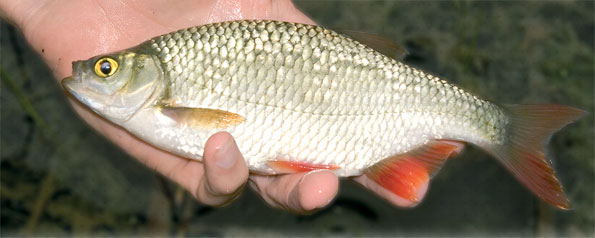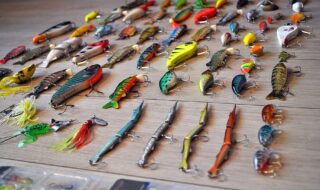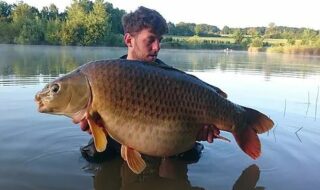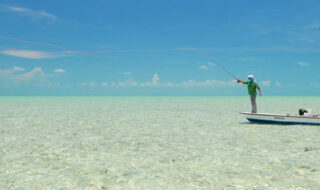All About Rudd
Rudd (Scardinius erythrophthalmus)
Weight: On venues where there are large shoals, the fish tend to become stunted and rarely grow to above 4oz to 5oz in weight. On larger British waters, such as gravel pits, the average can be over 1lb with a fish weighing more than 2lb being regarded as a specimen. The odd 3lb-plus fish does appear every so often but this is normally from specimen carp venues that rarely see bait other than boilies and pellets. Fish over 4lb are a real headline grabber in England, but the occasional one does appear at Irish venues. In the past, big rudd have been reported – only to be confirmed later as a rudd/bream or, less common, a roach/rudd hybrid
British record: 4lb 10oz, Simon Perry in 2001 from Clay Lake, County Armargh Lake in Northern Ireland (correct as of August 2017)
Length: Rarely exceeds 34cm, but some have reached 45cm
Lateral line: Look for a scale count of between 40 and 45
Age: Can live for up to 17 years in the wild
Preferred habitat: Prefers shallow stillwaters such as ponds, lakes and meres that offer plenty of weed cover, although they will also thrive in slow-moving waters like canals, and lowland rivers and drains, as well as quiet backwaters
Feeding: Has a natural diet of snails, mayfly and caddis larvae, daphnia, algae, assellus, shrimps and bloodworms. They are most active between April and August when shoals of small fish take insects off the surface film during the day. Bigger specimens, however, prefer to feed at lower levels, eating snails and insect eggs from reed stems
Hybridisation: Readily cross-breeds with roach, bream and, occasionally, with bleak and chub. These can normally be recognised by an oversized anal fin when crossed with a bream or the lack of a protruding lower jaw when crossed with a roach. The only way in Britain to positively identify a true rudd from a rudd/roach hybrid is by examination of its pharyngeal (throat) teeth; rudd have two rows, roach have only one and a hybrid a partial second set. However, Ireland has hybrids on the record list and can be identified without being killed, so let’s hope this process is introduced here soon
Maturity: Three to four years
Spawning: Fish move into warm, heavily-weeded shallows in late spring (May) where the female can lay between 100,000 and 200,000 pinkish-coloured eggs per kilogram of body weight and which stick to soft weeds and reed stems. Depending on the water temperature, the eggs hatch between eight and 15 days, after which the pinhead-sized fry feed on microscopic plankton
Natural predators: Pike, perch, zander and cormorant
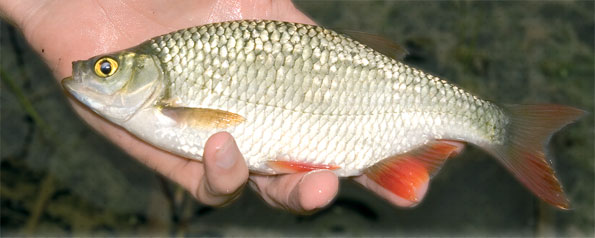
Identification
Colouring
A deep-bodied fish that has an olive-bronze colouring across its back. Its flanks are normally a bronze-yellow that fades closer to the belly, but there is an ornamental strain with a predominately golden colour that has been stocked in commercial venues
Mouth
Seen primarily as a surface-feeding species as its lower jaw protrudes upwards and out beyond its upper lip.
Eyes
These are gold in colour with a red fleck towards the outer edges of the iris.
Pectoral Fin
Convex in shape, these are predominantly a red colour that fades slightly at the tips of the rays.
Dorsal Fin
The concave-shaped fin has a wide base and nine branched rays. Unlike that of the roach, whose dorsal fin is set in a line with the pelvic fin, the rudd’s is sited well behind the base.
Pelvic Fin
Like the pectoral fins these are convex in shape and deep red in colour.
Anal Fin
This fin has a concave shape – similar to that of the roach – but is a deep red in colour.
Tail/Caudal Fin
The smooth concave fin ends in pointed tips, as with all its fins. The tail is red with a brown tinge.
The Life Cycle
HABITAT
Rudd are most commonly associated with still waters, particularly those that are profusely overgrown with aquatic vegetation, although they do occur in slow-moving lowland rivers and sluggish backwaters.
They are well suited to life in nutrient-rich shallow farm ponds and pools where they will often form vast shoals that hugely overpopulate the pond. In such situations they strip the naturally occurring invertebrates from the environment and consequently become stunted.
It was at such farm ponds that I cut my angling teeth, often catching several hundred rudd in a day. They were all the same small size and seemed to be everlastingly hungry.
BREEDING
The rudd spawns in May or June, scattering its eggs over submerged weed beds. The fish are prolific spawners – one female can produce far more than 100,000 eggs each time.
At Sparsholt four years ago, we stocked 200 young rudd in the college fishery; based on a conservative estimate, those fish may have produced 10 million eggs the following summer… Had only one per cent of those eggs survived to become small rudd we may have had as many as 100,000 in the fishery within a year!
GOLDEN YEARS
It’s common for a small percentage of rudd fry to appear golden in colour, rather than dark green, across their backs, and are known as golden rudd.
However, these stunning creatures are often mistaken for the ornamental fish, known as the golden orfe, by anglers.
In the wild, these small, brightly coloured offspring are the first to be spotted by any predators and are not surprisingly uncommon in fisheries – particularly those containing perch and pike!
GROWING PAINS
Young rudd will reach a size of up to 7cm in their first year if food is plentiful, and they feed predominately upon plankton. After this the rudd will consume a mixed diet including soft, submerged waterweeds, aquatic invertebrates and any unfortunate insect that falls onto the surface of the water.
The rudd is adaptable enough to feed in the upper layers of the water thanks to its highly upturned mouth. This enables the fish to easily snatch items from the surface film.
JUVENILES
Rudd and roach are commonly confused when juvenile or poorly coloured, particularly by young and inexperienced anglers.
Unlike the rudd’s the mouth of the roach faces straight ahead. Another feature that helps tell the two species apart is the position of the dorsal fin in relation to the pelvic fin (see previous page). With the roach the pelvic and dorsal fins start in a position level with one another; the dorsal fin of the rudd is set further back.
VENUE ADVICE
If you would like to catch a really big rudd then you will have to avoid the more overpopulated farm ponds as these will not contain sufficient food to enable a rudd to grow to monster proportions.
Probably the best bet is to investigate local gravel pit carp fisheries. Many such waters contain low numbers of rudd and, being clear and weedy, are stuffed full of suitable food for the fish.


